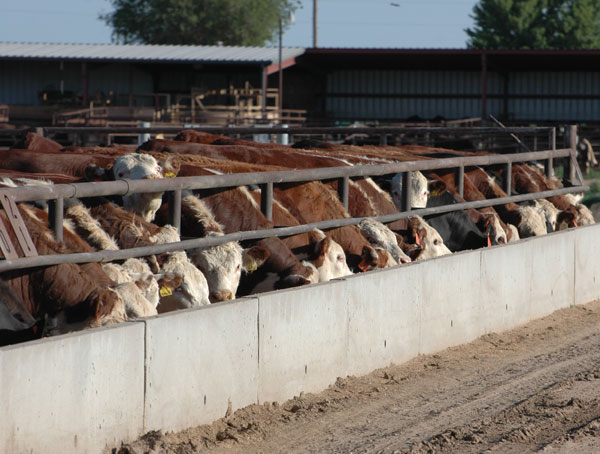Feedlot placements below expectations
Feedlot placements in April were significantly less than expected, according to Friday's Cattle on Feed report. Placements of cattle weighing more than 800 pounds continue to comprise the largest proportion of cattle entering feedlots.
May 23, 2015

If anything, Friday’s monthly Cattle on Feed report will likely be viewed as bullish.
Cattle on feed May 1 of 10.6 million head is 1% more than the same time last year. That’s 0.7% less than the average estimate ahead of the report.
Marketings of 1.64 million head in April were 8% less than a year earlier. That was about in line with the pre-report estimate for marketings to be 7.6% less.
April placements (1.55 million head) were 5% less than a year earlier. Estimates ahead of the report called for placements of 2.4% more. Heavyweight placements (800 pounds and heavier) once again comprised the largest proportion of placements (41.3%). Placements weighing 700-799 pounds were 22.5% of the mix; placements weighing 600-699 pounds were 15.5%; placements weighing less than 600 pounds were 20.7%.
“On a year-over-year basis, average placement weights have been higher since August 2014,” say analysts with USDA’s Economic Research Service (ERS) in the May Livestock, Dairy and Poultry Outlook. “With more steers than heifers entering the feedlot, it is expected that weights will continue to increase. Placements were up in March 2015 compared with March 2014, with cattle of 800-plus pounds the largest category. At the same time, marketings of fed cattle in March 2015 were the lowest March marketings since the series began in 1996.”
ERS analysts explain that the increased proportion of heavy cattle placed in feedlots could impact steer and heifer slaughter later this summer and fall.
“This scenario is complicated by the possibility that the current constrained steer and heifer slaughter could persist for the rest of the year,” ERS analysts say. “Heavy slaughter weights—which would also likely consist of steers rather than heifers—would mitigate to some degree the impact of reduced slaughter on total beef production. Currently, weekly, year-to-date federally inspected (FI) slaughter is running just over 7% below year-earlier slaughter, but beef production is only 5% percent below year-earlier levels; average weekly dressed weights of all FI cattle in April 2015 were nearly 3% (almost 23 pounds per carcass) above April 2014’s weight. Further, weights have not yet shown their typical seasonal decline to a May low before again increasing.”
You might also like:
Don't bid away future profits by overpaying for cows
Pricklypear control helps replenish pastures
6 steps to low-input cow herd feeding
About the Author(s)
You May Also Like





